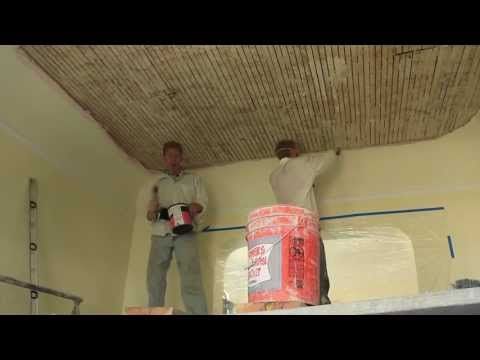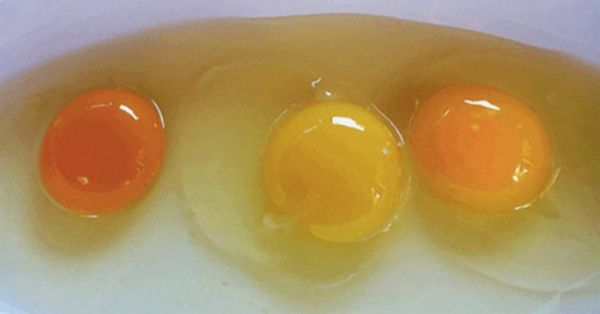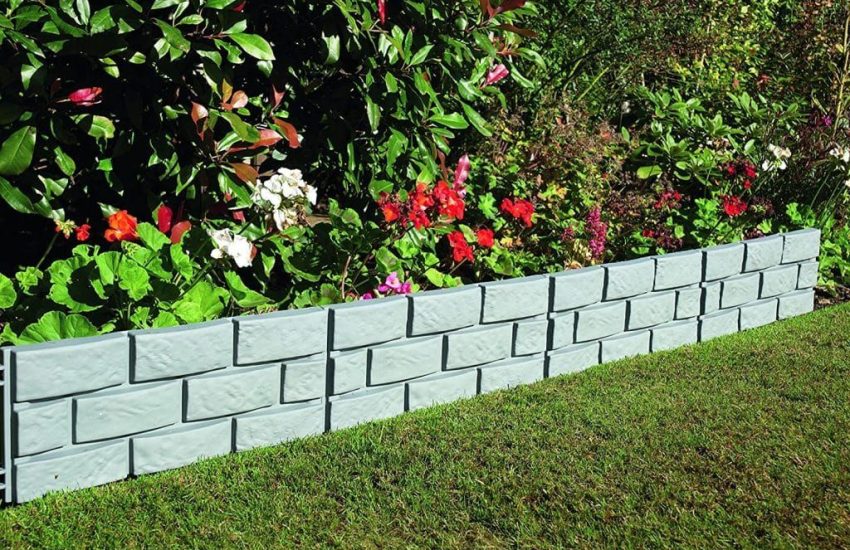How to remove interior plaster Habitat Tips
How to remove plaster’interior plaster ?
Interior plaster is a good alternative to wall and ceiling cladding, especially if you are looking for a more modern look’They are not completely free of small holes. It s’It harmonizes perfectly with an old interior and gives character to old renovated barns. However, the gypsum can quickly tire the inhabitants of the house. And when it does’acts of the’remove, c’is another matter.
How to remove your cast yourself ? How to smooth a gypsum ceiling ? How to remove a plaster of paris’a wall ? What to do if the plaster has been removed ? Here are the steps of work to successfully remove this coating with very hard points.
Different types of interior plaster
Also to be discovered: How to clean black tempered glass ?
Before you begin to remove an internal patch, you must start by Find out what type of plaster will occupy your walls or ceiling . Indeed, the method of subposition of’a support depends on the type of plaster. This embossing coating can be made of several materials.
Therefore, the first step is to define which internal plaster has been applied to the walls and ceilings, and then apply the right method of’removal of the plaster itself. There are 3 types of internal plaster :
- Fiber plaster: it is easy to detect, as it dissolves with water’water. Its tips are not aggressive and are more likely to be damaged’have droplets. C’is the easiest plaster to remove.
- Plastic plaster: thanks to the feel of its points, it is always recognized in the same direction. As it spreads over the roller, it remains relatively uniform. This, too, is easily removed from the wall.
- Mortar plaster: this plaster is the most difficult to remove. There are two types of’between them:
- Cement mortar plaster: it has very aggressive points and a very pronounced roughness. It has a yellowish or gray tint.
- Gypsum mortar plaster: it remains whiter than cement mortar plaster, but it has the same aggressive appearance.
Why remove an internal patch ?
Interior plaster can cover one wall or all the walls of a building’a room, according to the’desired mood. However, it is so typical for the rustic style that it can be used as a decorative element’it tires quickly, especially if you want to completely change your decoration and remove it because of the difficulty of removing it’atmosphere of the room. Most often , Homeowners want to remove an internal plaster to replace it with a more fashionable coating .
In addition, the relief of the plaster forms aggressive points which are not friendly and sometimes cause scratches on the person by rubbing it a little too close. These coatings will also be slightly yellow or badly aged. Again, there will be a problem to repaint or simply clean it because of the roughness.
Not aesthetically pleasing and not easy to put on, interior plaster is not a good choice’is more welcome in the home.
However, to replace the gypsum with a fashionable coating, you need to use special techniques, because it will be very difficult to remove depending on the type of interior plaster you have on your walls. And it is even more problematic to the’It will get tired quickly, especially if you want to completely change your decoration and remove it because of the difficulty to remove it’access when it is on the ceiling. Its very hard points are of’even more so when the plaster has been painted, the paint acts as a protective barrier and improves the roughness.
Techniques to remove plaster from the wall or ceiling
Depending on the type of interior plaster on your walls, it is necessary to remove it’In general, use several techniques to remove them. As there are 3 types of interior plaster before, there are three methods that are more or less physical for the’remove.
It is time to roll the handles and arm yourself with the tools necessary to remove this plaster inside, which is not expensive elsewhere’is no longer necessary. To this end, our experts will give you advice on how to’ simply remove a plaster from the wall or ceiling and explain the steps to follow.
strip the interior plaster
Removal of internal plaster is an option if you have fiberboard plaster or plastics. Mortar plaster is much too difficult to weaken with this method. You must therefore equip yourself with’a stripper, a plasterer and a plasterer’a spatula and water’elbow grease. The chemical scraper acts directly on the laminated droplet for the’It is accessible to everyone, even if you do not have the ability to soften and peel it from the base, as it is not possible to remove it with a grinder or chisel’This is the case for paint, for example.
After a period of time’In fact, this mineral plaster is very difficult to remove and the application, the plaster will come off the wall with the spatula.
The steps to follow to strip your internal plaster on a plastic base are the following:
- Apply the solvent on the entire surface.
- Allow the time indicated on the pot, which is usually between 20 and 25 minutes.
- If necessary, remove the plaster with a spatula and a scraper.
- Repeat the process 2 to 3 times.
L’ undeniable advantage of this method is that’it is accessible to everyone, even if you do not’are not a craftsman. The main disadvantage is the cost. In fact, it requires 600 grams of stripper for a surface of 1 m².
Knowing that’it is necessary to repeat the procedure 2-3 times, you will need a lot of products, especially if the surface to be treated is large.
Here is a video showing internal plaster removal work or droplets :
It is also possible to’use a thermal stripper to use to remove the plastic plaster. In some cases, if your interior plaster is thin enough, a wallpaper peeling machine may be appropriate because of the steam that will peel the plaster from the wall or ceiling.
crush the interior plaster
The second solution consists of to grind the plaster to remove the roughness rough. In general, c’is the solution that is’apply in the presence of mortar plaster. In fact, this mineral plaster is very difficult to remove and the application, the plaster will come off the wall with a spatula’Use of the’an abrasive subtraction is mandatory.
Especially if’it s’acts of’a cement mortar plaster that requires a lot of water’physical effort.
To grind an internal plaster, you need to equip yourself with’You will need an electric grinder, but also gloves, goggles and a pair of gloves’a mask. L’operation will allow to’eliminate a lot of dust. If the electric grinder is not used, you will have to use a spatula’is not strong enough, then with a grinder or a chisel, it can be successfully removed.
You will do the following to dismantle your walls and ceilings by grinding them :
- Cover the floor with a tarp and protect all remaining furniture in the room.
- Open windows in large quantities to remove dust.
- Sand in plaster square meters per square meter.
- Dust on the wall.
- Clean the room.
grinding the plaster requires some physical endurance It will take a whole day for the plaster to be removed from the pot’a normal piece. L’advantage is that’it is inexpensive. Apart from the’purchase of the sander, it does not’There is no cost elsewhere.
The least is that’It makes a lot of dust, and therefore a big cleaning afterwards. In addition, the work is painful.
Covering the plaster with plaster
After all, you can do it yourself register for plaster coating with a Plaster decide. This solution is the simplest, because it avoids the’plaster removal and subsequent renovation and preparation of walls and ceilings. In addition, you will not’Do not have to tolerate chemical odors from the cleaner or dust from grinding.
It is possible to cover a plaster with smoothing and decorative plasters only if the roughness of the plaster n’is not very pronounced. C’is the case of the small drop plaster, which is also called drop plaster, for example. Thus, you can apply a plaster undercoat a special coating on the plaster drip to hide it.
Here too, you will need plaster, plastering materials and other products’a spatula and’a good hand. You must do the following:
- Clean the surface to improve the’adhesion of the plaster to the support.
- Run the plaster with the spatula and cover all the roughness of the plaster.
- Leave the coating for the specified time to dry.
- Do the touch-up and final work as needed.
In conclusion, it is’act of cover the plaster wall with a plaster for smoothing it, thus obtaining a smooth surface. L’advantage is that your work does not produce dust or toxic fumes, as with the stripper. D’On the other hand, the size of your room will be reduced by as many centimeters as it will be on the walls to hide the plaster.
Here is a video showing how to renovate and smooth a plastered wall :
Rehabilitation of the support after removing the patch
Once your patch is removed, the work is not done’is not finished. Removing the plaster may have damaged your wall or ceiling if you used a grinder or a chisel. Now you need to move on to the next step’next step to prepare the substrate and apply the coating on your wall apply a smooth.
What to do with the support if the plaster has been removed For rehabilitate a wall or ceiling after removing the plaster , You must do the following work:
- Clean the wall: you must wash it with the detergent Saint Marc, let it dry and, if necessary, dust.
- Smoothing the plaster: the spilling and smoothing coating is your best ally for this step, which requires you to plug and smooth the wall.
- Pass an undercoat: the’Primer or plaster’hanging primer will allow the final paint to cling better to the base. Therefore, you must convert it into one or two applications depending on the specifications of the pot.
- Finished with paint: the paint is done in one or two layers, depending on the color chosen. You can calculate the amount of paint you need. N’remember to check passports to get through a mistake-free rendering.
Rate to have your plaster removed by a professional
The work to be done’removal of’Interior plaster is physical, dirty and requires special tools or stripping products. It is possible to’Do this operation by yourself to save money’It is advisable to use a silver plaster’involve a craftsman for a perfect result.
To grind the internal plaster usually takes a whole day of work. A second day is often needed to clean the room and paint the wall or ceiling. To remove the internal plaster, it is necessary to take two to three days, depending on how long the chemical scraper.
C’ is a plasterer to remove the plaster inside the house. Now, no matter if the price depends on the level of difficulty of the site (wall or ceiling), the’accessibility of the area to be treated, your geographical area and is variable to the chosen professional, you should count about 35€ per m² for the’removing your plaster . Learn more about the price of plastering work.
Quote for removing the interior patch
To find construction professionals who s’To remove your internal plaster, just ask for a quote. Customers will then be contacted by craftsmen near your establishment who can offer their services. Any d’First, you can easily compare the prices offered by these professionals to choose the best plasterer at the most attractive price.
Quotes for the’removal of’It is possible to cover a plaster with smoothing and decorative plasters only if the roughness of the plaster is not sufficient’completion of work of paving and surfaces, just fill out the following form:


